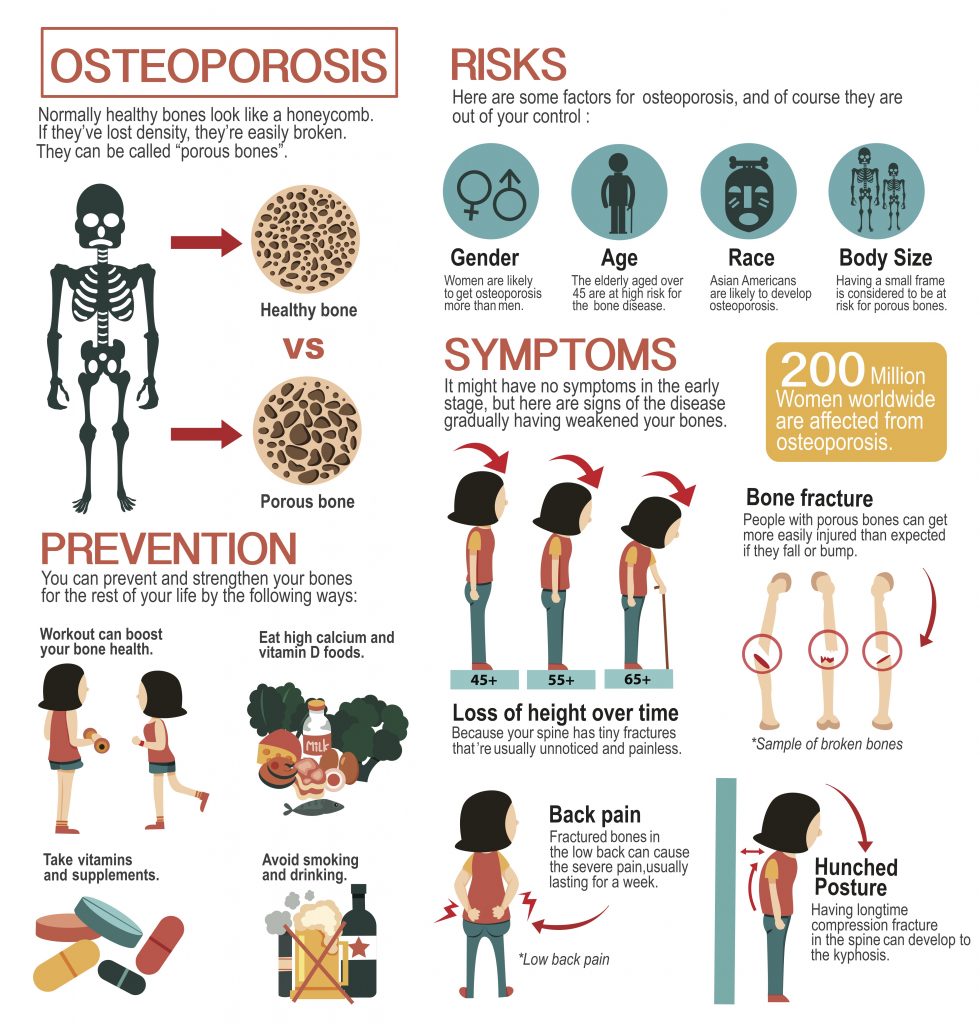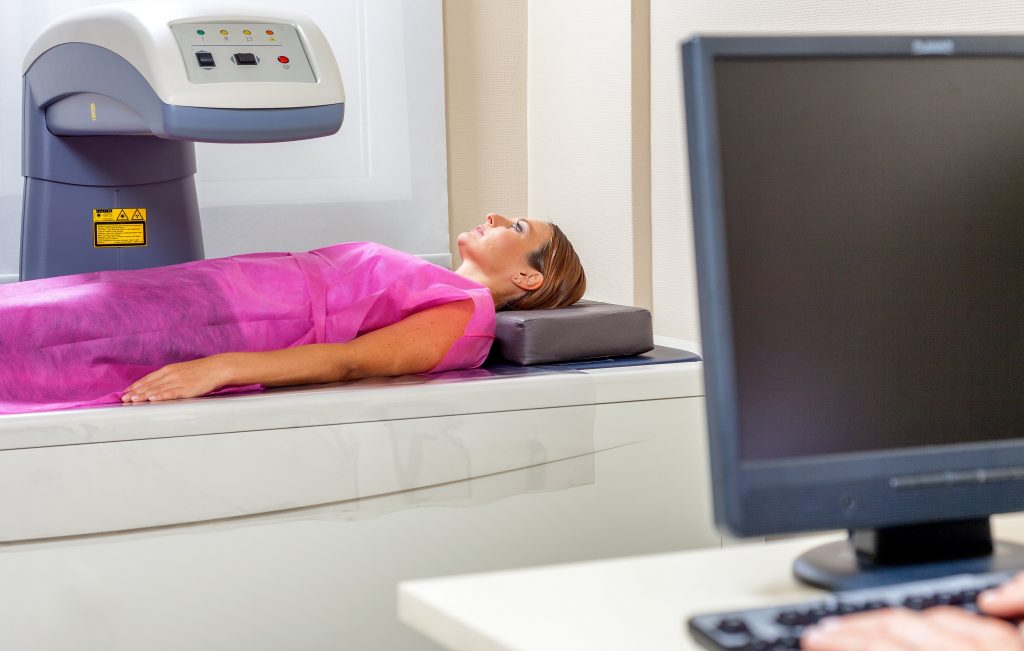Osteoporosis is a condition wherein your bones become weak and fragile. There is deterioration of the density and quality of the bone which leads to an increased susceptibility to fractures.
Osteoporosis is predominantly a disease of the elderly. Over time most people have a decrease in their bone mass. However some people lose bone at a faster rate leading to osteoporosis.
Osteoporosis is mostly noticed in women after menopause. Estrogen, the female sex hormone, has a protective effect on the bones. After menopause there is a decrease in estrogen thereby leading to weakening of the bones. Similarly some men have a decrease in testosterone, the male sex hormone, during the process of ageing. This can also lead to osteoporosis.
Low intake of calcium rich food and vitamin D deficiency both contribute to deterioration in bone health. Intake of alcohol, smoking , chronic abuse of steroid medications, prolonged periods of inactivity all contribute to osteoporosis. Those with a family history of osteoporosis or hip fracture are also at an increased risk of osteoporosis.
Sometimes osteoporosis can also present at a younger age. Detailed evaluation of these patients is necessary as osteoporosis may be one of the manifestations of a much more serious condition that the patient might be harbouring. Furthermore, the osteoporosis can be reversed by treating this underlying condition.
The diagnosis of osteoporosis is made based on an investigation called as Bone mineral density estimation. This is done by a DXA scan. In a DXA scan bone mineral density is measured at different areas such as spine, hip and forearm. The bone mineral density of the patient is compared to the bone mineral density of a healthy young adult and a T-score is assigned.
A T score less than – 2.5 is used for diagnosing osteoporosis. A T-Score less than -1 suggests osteopenia and this condition confers increased risk for developing osteoporosis.
In younger age groups the Z score is used for evaluation of osteoporosis.
The major concern of osteoporosis is that the weakening of bones leads to increased risk of fractures. Most of the times there may not be any trauma leading to these fractures. The spine and hip are especially at a higher risk for developing osteoporotic fractures.
Spinal fractures frequently go unnoticed. Patients present with chronic back ache or with stooping forward position due to instability of spine. Similarly hip fractures leads to difficulty in walking and chronic pain. Furthermore these fractures do not heal quickly leading to prolonged immobilisation and subsequent mortality. Hence it is of utmost importance to prevent such fractures by addressing osteoporosis at an early stage.
One of the keys to prevent osteoporosis is to maintain a healthy lifestyle which includes regular exercise , decreased consumption of alcohol and smoking, healthy eating habits with consumption of diet adequate in calcium, regular exposure to sunlight for Vitamin D levels and control of other comorbidities such as diabetes.
There are multiple medications which are available to treat osteoporosis and prevent fractures. These act either by preventing bone loss or by increasing new bone formation. While drugs such as bisphosphonates and teripatartide are already available in the Indian market, newer drugs are constantly being developed which are targeted to provide an even more improved prevention of fracture risk. Consult your endocrinologist to get the treatment appropriate for your condition.
The AACE recommends that all postmenopausal women more than 50 years who present with a fracture should be evaluated and treated for osteoporosis. Furthermore, all postmenopausal women more than 50 years even without a fracture should be evaluated for risk of osteoporosis clinically.
FRAX is a clinical score which can be used to evaluate those women who are at a risk for developing osteoporosis . In those women who are deemed to be at a higher risk, DXA scan is performed to evaluate for osteoporosis.
Younger women or males with recurrent fractures or pathological fractures should also be evaluated for osteoporosis.



